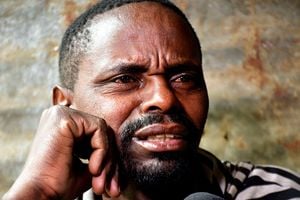Kenya's population to hit 70m amidst fertility decline, new report

Kenya’s population is projected to hit 70.2 million in the next two decades according to a new report by the National Council for Population and Development (NCPD).
What you need to know:
- Despite the declining fertility rate, the number of Kenyans is expected to reach 57.8 million by 2045 and continue growing over the next 50 – 60 years with the present population momentum.
- There were 47.6 million people enumerated in the Kenya Population and Housing Census 2019 which was 4.3 times the population enumerated in 1969 during the first census taken after independence.
Kenya’s population is projected to hit 70.2m in the next two decades with the demographic composition morphing into a more youthful structure, according to a new report by the National Council for Population and Development (NCPD).
Despite the declining fertility rate, the number of Kenyans is expected to reach 57.8m by 2045 and continue growing over the next 50 – 60 years with the present population momentum.
Since 1999, Kenya’s population has grown exponentially with an additional one million people annually, according to the Sessional Paper No.1 of 2023 on Kenya National Population Policy for Sustainable Development.
There were 47.6 million people enumerated in the Kenya Population and Housing Census 2019 which was 4.3 times the population enumerated in 1969 during the first census taken after independence.
The country had a 2.3 per cent growth rate yearly between 2009 and 2019 a decrease from 2.9 per cent between 1999 and 2009, as indicated in the 5th Sessional Paper.
Speaking during the report launch on Thursday, The National Treasury Cabinet Secretary, Njuguna Ndung’u, noted that, “population growth has its own dynamics which are—mortality, fertility, and migration. These three factors are, in turn, closely tied to the development discourse.”
“Rapid population change if not addressed or matched with income growth can magnify development challenges. A young population requires adequate human capital development facilitation to cater for diverse demands,” stated CS Ndung’u who represented the Chief Guest, Prime Cabinet Secretary, Musalia Mudavadi at the launch.
The report also shows age transformation in Kenya’s population structure with the country moving from child to youthful population with a median age of about 20 years.
According to the NCPD Director General, Mohamed Sheikh, the proportion of the youth, persons in the working age, women of reproductive age, and older persons has increased while the number of children aged below 15 has been on the decline since 1999.
Dr Sheikh explains that the proportion of the population in the 0-14 age group is an indicator of the youthfulness of a country’s population.
In 2019, children aged 0-14 in Kenya constituted 39 percent of the total population thus implying that the country’s population is still youthful.
According to the Finance Minister, a youthful age structure, from a demographic perspective, ensures that the population will continue to grow even if average fertility drops to the “replacement level” – the level at which each generation bears the exact number of children needed to replace itself.
The report, however, states that changes in the population age structure have direct implications for the population growth as well as the production and consumption of resources.
These changes and implications are inextricably tied to the development progress because age influences people’s social and economic behaviour and needs.
For Kenya to gain from the demographic transition, commonly known as the demographic dividend, NCPD has urged the government to put in place and implement appropriate economic and social policies, particularly in health and education.
“Vulnerable populations requiring special attention include orphaned children below 18 years of age, older persons aged 60 and above, intersex persons and persons with disability.”





